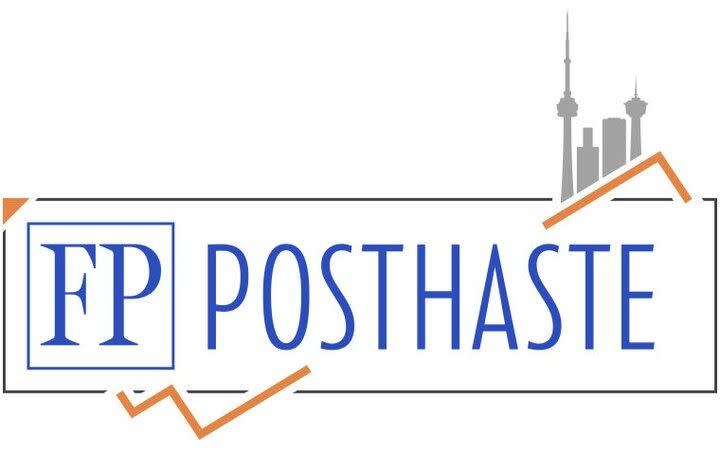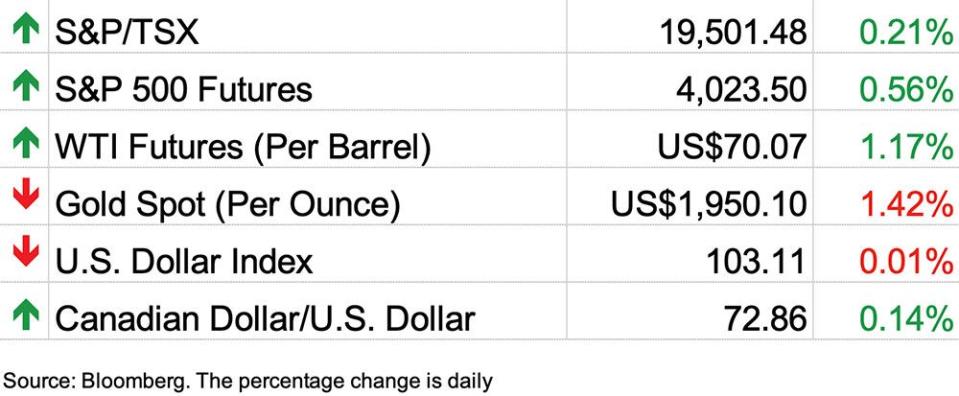Posthaste: Why small banks and commercial real estate could be headed for a 'doom loop'


Good morning,
Things are a little calmer out there this morning after the sale of failed Silicon Valley Bank to peer First Citizens over the weekend, but investors remain edgy about what comes next.
Since SVB collapsed on March 10 triggering the worst banking shock since the 2008 global financial crisis, markets have braced for signs of more damage from the aggressive ramp-up of interest rates over the past year by the world’s central banks.
“The hunt is on for the next shoe to drop,” wrote Capital Economics chief economists Neil Shearing, in his note this morning.
Concerns so far have mostly focused on banks’ unrealized losses on debt securities, but Capital warns that there is another danger lurking out there — deposit flight.
Banking fears bring back memories of the Savings and Loans crisis in the United States, which between the mid 1980s and mid 1990s saw the collapse of about a third of so-called “thrift” organizations, small banks that specialize in savings accounts and mortgages.
The main catalyst in their downfall was higher interest rates, said Capital’s chief North American economist Paul Ashworth.
When Federal Reserve chair Paul Volcker began rapidly hiking rates in the early 1980s small banks were forced to raise their own deposit rates to prevent a flight to money market funds or bond markets offering higher returns. Unfortunately, their own interest earnings were not increasing as quickly because lower fixed-rate mortgages made up the bulk of their portfolios.
Today, small banks face a similar dilemma, said Ashworth. “As money market rates rise, do you match those higher rates, which eats into profit margins, or do you stand by and watch as depositors seek higher returns elsewhere?”
After Silicon Valley Bank fell, deposits at small U.S. banks dropped by a record amount and over the past month flows into money market funds have risen by more than US$300 billion to a record US$5.1 trillion.
But even before the banking crisis, small banks were already running low on cash and the Fed’s seniors loan officer survey showed a higher proportion of banks were looking to tighten lending standards. Historically the only time such a large share of banks had been in this position was immediately before or during recessions, said Ashworth.
Commercial real estate, which accounts for 43 per cent of small bank loans in the U.S., would be the most affected if banks continue to rein in lending to cope with a flight in deposits. Small banks provide the lion’s share of commercial real estate lending, with $1.9 trillion in such loans outstanding, more than double the $0.9 trillion held by big banks.
Without small banks, commercial real estate borrowers would be hard-pressed to find other sources of funding. Pension funds and sovereign wealth funds are a possibility, but Ashworth questions whether they would want to take on the risk, considering that commercial property values are falling.
“The outlook for commercial real estate already looked precarious even before the recent stresses emerged in the banking system,” he said and Capital expects a 15 to 20 per cent decline in capital values in the sector peak to trough.
Highly leveraged commercial real estate always struggles when interest rates are high, and it now faces even more headwinds as the rise of remote work and online retail sales sap demand for office and store space.
Jerome Powell played down the risks at his press conference on March 22, when the Federal Reserve raised its rate by 25 basis points.
“We’re well-aware of the concentrations people have in commercial real estate,” said Powell, but added that “the banking system is strong, it is sound, it is resilient, it’s well-capitalized.”
Capital and others think the risks are greater than the Fed is letting on.
Scott Rechler, the chief executive of property manager and developer RXR and a member of the board that oversees the New York Federal Reserve, warned on March 24 of potentially systemic problems in the real estate finance market, which will see $1.5 trillion in commercial real estate debt mature in the next three years.
“The bulk of this debt was financed when base interest rates were near zero. This debt needs to be refinanced in an environment where rates are higher, values are lower, & in a market with less liquidity,” he tweeted.
Capital warns that is there is a growing risk that the stresses on small banks and commercial real estate escalate into an adverse feedback or “doom” loop. Small banks rein in lending, which leads to more defaults in commercial real estate loans, which pushes property values down further and forces banks to increase their bad loan provisions and tighten lending even further.
“In the worse-case scenario, we could have a rolling crisis that lasts for years — echoing what happened during the S&L crisis,” said Ashworth.
_____________________________________________________________
Was this newsletter forwarded to you? Sign up here to get it delivered to your inbox.
_____________________________________________________________________


Fed up with food prices? Today’s chart might make you feel a little better in a schadenfreude sort of way. Sure, food prices remain stubbornly high in Canada, but grocery inflation has been running in the double digits in many economies, says BMO chief economist Douglas Porter, who brings us the chart of the day.
In the latest reading from February, food bought in a store in Canada outpaced overall inflation, rising 10.6 per cent from a year ago, the seventh consecutive month of double-digit increases. That’s down from a peak of 11.4 per cent and the lowest since last summer, so the good news is the pace is easing, said Porter. “However, prior to the past year’s run-up, that’s still the most torrid grocery inflation seen since 1981,” he said.
Food inflation in the United States at 10.1 per cent puts Americans in the same boat as Canada, but in Europe food inflation is running at 17.7 per cent and in the U.K. it’s at 17 per cent. And unlike North American, European food inflation has yet to peak, said Porter.
The standing committee on agriculture and agri-food meet on food price inflation.
Earnings: Carnival Corp.
___________________________________________________

_______________________________________________________
Budget 2023: Industry lining up for carrots as Ottawa prepares to accelerate the green transition
Doom and gloom dominates, but there are options out there for investors who look beyond the noise
The mystery of a tiny Toronto laneway that sparked a historical real estate drama
Peter Hall: Why companies should invest now, even if a recession is coming
No one likes to file their tax return, but chances are you will get a refund this year, as have 66 per cent of the 3.7 million returns processed since the start of this year’s tax filing season. But credit counsellor Sandra Fry says there are other reasons to file a return every year, from qualifying for income-tested programs and services to creating more registered retirement savings plan contribution room. Find out why it’s worth filing your tax return even if you don’t owe any money
____________________________________________________
Today’s Posthaste was written by Pamela Heaven, @pamheaven, with additional reporting from The Canadian Press, Thomson Reuters and Bloomberg.
Have a story idea, pitch, embargoed report, or a suggestion for this newsletter? Email us at posthaste@postmedia.com, or hit reply to send us a note.

 Yahoo Finance
Yahoo Finance 



